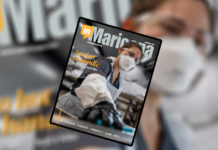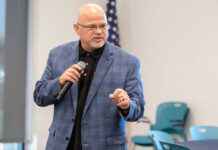
On May 3 my wife Lisa and I set out on an experience that would rock our world. We left behind the Western world and entered into a culture where the comforts we take so much for granted had now become luxury. Soap in a restroom, a napkin at your table, air conditioning in your hotel or car, a nice big carne asada burro are all things we did without. We had arrived in Africa, home of safaris and big game, as well as malaria, HIV/AIDS and the worst poverty on planet Earth. We also found that this is the home of some of the bravest and most beautiful peope in the world.
We were joining my friend Claude Nikondeha at Amahoro Africa. (www.amahoro-africa.org) Our destination was East Africa, and our first stop would be Mukuno, Uganda, a suburb of the largest city in Uganda, Kampala. On our drive from the airport to our hotel, I noticed two things about Africa.
As a native desert dweller from Arizona, my eyes are not accustomed to so much green. East Africa receives much rain, and everywhere you look you see green; it was amazing how much foliage there was. They say you can plant a stick in Uganda and it will sprout leaves. The second, and probably the greatest impact, was how many people live in one place. The trip to Mukuno was approximately 20 miles and a long two hours, all traveled on roads that were lined with people. People walking, people driving, people riding, people buying, people herding animals, people selling, farming, bartering, sitting, standing, eating, people, people everywhere. Driving is something done by professionals in Africa. Stop signs and lights are just suggestions to be followed only when absolutely necessary.
We spent four days at the Colline Hotel, made famous by its sister hotel in Rwanda and the movie “Hotel Rwanda.” We spent our time meeting and conversing with leaders from around East Africa. The countries of Kenya, Rwanda, Burundi, Uganda, Congo, Tanzania, as well as South Africa were represented. It was an amazing time of conversation and connection with men and women who were not just a different color but from an entirely different culture. These brave men and women are overcoming hundreds of years of colonization. They have endured genocide, poverty, hunger and disease. They all desire one thing, a better Africa, and they have the vision to get it done.
On Friday we took a field trip to Kenya and to “one of the most dangerous cities in the world,” Nairobi. It is a very modern city, with over a third of the population living in slums. These slum dwellers survive on less than a dollar a day and have no water, sewage or electricity. Close to two million people live in the slums of Nairobi. Of course Lisa and I instantly fell in love with the beauty of the city and the people. The very mild climate was much to our liking as well.
We found Nairobi not to be the most dangerous city in the world but a city with pockets of hope that shine brightly. We were there to visit my friend, Edward Simiyu, pastor of City Harvest Church. (www.thecityharvest.org) Edward is doing more work among the poor, the hungry and the oppressed than a dozen of his mega church brothers in America. We visited a place called the VCT (voluntary testing and counseling center). City Harvest runs and staffs this important free testing center for those who would like to be tested for HIV/AIDS.
We also were led into the slum of Mutumba, which means second-hand slum, to visit women who had formed a support group there. These amazing women are mothers, poor, widowed and living with a deadly disease. Their families, their churches and the community have shunned them, all because they were infected with a disease they did not ask for. They had come together to support each other and to bring hope to an otherwise hopeless situation in a place where hope is a valued commodity. We brought home with us prayer beads that the women make and have them available for a small donation that will be sent back to the women to help them someday escape life in the slum.
The next day, Edward led us into Kibera, made famous by the movie “The Constant Gardner.” Kibera is the largest slum in Africa. Unofficial counts have over one million people living within one square mile of African soil, and there are no two stories. Seems impossible, but after walking the muddy paths and seeing the population, I believe it.
The slums are amazing places, complete with there own economic system. My friend Brian describes them perfectly: “Shacks and ramshackle homes jostle with shops, stalls, booths: beauty shops, little stores selling everything – phone cards, cell phones, fruits, vegetables, a goat carcass, cow stomachs, little dried fish, big smoked fish (refrigeration is not even imagined here), beer, peanuts in little paper cones, used but highly polished shoes, small stools, irons, clay ovens, charcoal, sugar cane, colorful fabric.” All of this activity happens with a crowd of thousands walking by at all times of the day or night.
City Harvest Church runs a Community Center within this slum. This is a beautiful oasis in the midst of suffering and disease. It’s here that they have school for 200 children a day, teach older men and women the skill of sewing, and hold a church service on Sunday. Amazing work is being done in some of the harshest conditions on the planet, and young men and women living within Kibera do all of it.
Arriving back in the U.S. was a shock to both Lisa and I. We felt as though we were entering a black hole. We had experienced so much. We had seen children suffering, men and women dying of disease. We had encountered a very small poor church doing more work than 50 churches the size of ours here in the States. It occurred to me that we were living in the comfort of our own lifestyle, and we had become apathetic to the social injustices happening around the world. There is so much to do, and we can only do so much, but we felt as though we must begin doing something.
Would you consider joining us in May of 2008 as we make our way back to Nairobi, Kenya, to experience the essence of Africa. You could become part of an effort to bring an end to the poverty and disease in Africa. We are in the begging stages of planning a discovery trip to one of the greatest places in the world and want to invite our friends and neighbors in Maricopa.
Please feel to contact me if you would like to join us on this adventure of a lifetime. You will go to discover Africa, but it was in Africa that I discovered myself.
Have an opinion you’d like to share with Maricopa? Please email it (500-750 words) and any applicable photos to [email protected] for consideration.









![City gave new manager big low-interest home loan City Manager Ben Bitter speaks during a Chamber of Commerce event at Global Water Resources on April 11, 2024. Bitter discussed the current state of economic development in Maricopa, as well as hinting at lowering property tax rates again. [Monica D. Spencer]](https://www.inmaricopa.com/wp-content/uploads/2024/04/spencer-041124-ben-bitter-chamber-property-taxes-web-218x150.jpg)
![Maricopa restaurateur makes Food Network connection [Namkeen Dhaba]](https://www.inmaricopa.com/wp-content/uploads/2024/04/439456716_377105198650519_7536248579664805896_n-218x150.jpg)

![O’Reilly gears up for second Maricopa location An exterior view of O'Reilly Auto Parts on John Wayne Parkway on May 2, 2024.[Monica D. Spencer]](https://www.inmaricopa.com/wp-content/uploads/2024/05/spencer-050224-oreilly-second-location-web-100x70.jpg)
![Province writer opens the athlete’s mind in new book Tom Schuman, a Province resident, poses with a copy of his new book, "My Wide World of Sports," outside his home on May 2, 2024. [Monica D. Spencer]](https://www.inmaricopa.com/wp-content/uploads/2024/05/spencer-050224-tom-schuman-sports-book-web-01-100x70.jpg)

